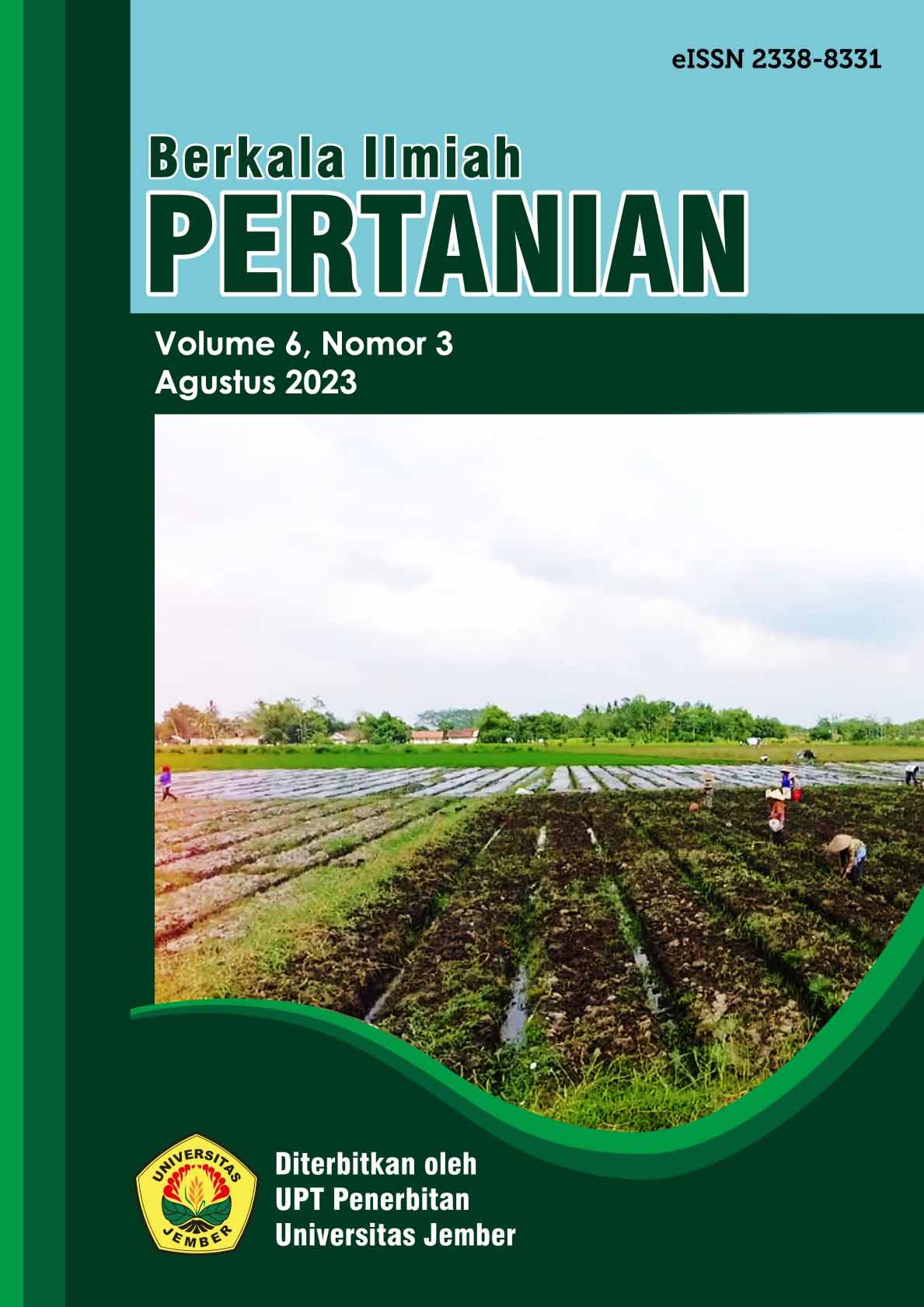Pengaruh Fungi Mikoriza Arbuskula dalam Aklimatisasi Planlet Kentang (Solanum Tuberosum L.) Kultivar Granola dan Atlantik Hasil Kultur Jaringan
DOI:
https://doi.org/10.19184/bip.v6i3.36166Abstract
Potatoes are a commodity that has high carbohydrates after rice, wheat and paddy which makes potatoes one of the most popular commodities. The high level of seed-borne pathogen infection causes decreased productivity. Tissue culture is one of the methods used to minimize the level of pathogen contamination. The acclimatization phase is a very crucial phase because at this stage it is hoped that potato plants which were previously in in-vitro conditions can adapt to the in-vivo environment. Arbuscular mycorrhizal fungi are fungi that can form a symbiosis with plants. The symbiosis that occurs is that mycorrhizae are able to produce growth hormone which can also help in carrying out nutrient uptake. This experiment was conducted using a factorial Completely Randomized Design (CRD), which consisted of two factors. The first factor is potato cultivar which consists of granola cultivar (K1) and Atlantic cultivar (K2) and the second factor is mycorrhizal dose (M) which consists of 4 levels, namely without mycorrhizal (M0), mycorrhizal dose of 1 gram (M1), mycorrhizal dose of 3 grams (M2), and mycorrhizal dose of 5 grams (M3). The experimental results were analyzed using analysis of variance (ANOVA) and if there was a significant difference, further tests were carried out using the Least Significance Diffent (LSD) test at the 5% level. Based on the experimental results, it was shown that mycorrhizal administration had a significant effect on the parameters of plant height and leaf area. The potato cultivar factor did not have a significant effect on all observation parameters. As well as the treatment of mycorrhizal factors and potato cultivars did not show any interaction on all observation parameters.
Downloads
Downloads
Published
Issue
Section
License
Authors who publish with this journal agree to the following terms:
1.Authors retain copyright and grant the journal right of first publication with the work simultaneously licensed under a Creative Commons Attribution-NonCommercial 4.0 International License that allows others to share the work with an acknowledgement of the work's authorship and initial publication in this journal.
2.Authors are able to enter into separate, additional contractual arrangements for the non-exclusive distribution of the journal's published version of the work (e.g., post it to an institutional repository or publish it in a book), with an acknowledgement of its initial publication in this journal.
3.Authors are permitted and encouraged to post their work online (e.g., in institutional repositories or on their website) prior to and during the submission process, as it can lead to productive exchanges, as well as earlier and greater citation of published work (See The Effect of Open Access).




















